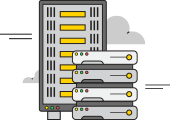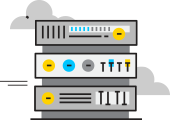Introduction
The Current Instruction Register (CIR) is a crucial component of computer architectures, serving as a fundamental part of the central processing unit (CPU). It plays a vital role in executing instructions and facilitating the smooth functioning of a computer system. The CIR holds the instruction currently being executed by the CPU, allowing it to fetch, decode, and execute instructions in a sequential manner.
History and Origins
The concept of the Current Instruction Register emerged alongside the development of early computer architectures in the mid-20th century. It became more prevalent with the advent of complex instruction sets and the need for efficient instruction processing. The earliest mention of the CIR can be traced back to the work of John von Neumann, an influential mathematician and computer scientist, who proposed the idea of storing the current instruction during the execution process. Over the years, the CIR has evolved to become an integral part of modern processors, contributing to the increased performance and reliability of computers.
Detailed Information
The Current Instruction Register serves as a small, high-speed storage unit within the CPU. When the CPU fetches an instruction from memory, it holds that instruction temporarily in the CIR before decoding and executing it. The CIR is usually implemented as a group of flip-flops or other fast memory elements that can hold the binary representation of the instruction.
Internal Structure and Functioning
The internal structure of the Current Instruction Register typically consists of multiple bits, with the size determined by the CPU architecture. It needs to be large enough to accommodate the entire instruction, including the operation code and any associated operands. The CIR interacts closely with other CPU components, such as the instruction decoder, arithmetic logic unit (ALU), and control unit.
Here’s how the Current Instruction Register works in a simplified manner:
-
Fetch: The CPU fetches the instruction from memory, usually from the address pointed to by the program counter (PC).
-
Store: The fetched instruction is stored in the Current Instruction Register.
-
Decode: The instruction decoder interprets the opcode and determines the required operation.
-
Execute: The CPU performs the operation specified by the instruction.
-
Update: The program counter (PC) is updated to point to the next instruction, and the process repeats.
Key Features of the Current Instruction Register
-
Speed: The CIR is designed for high-speed access, allowing for efficient instruction execution.
-
Temporary Storage: The CIR temporarily holds the instruction during the execution phase to ensure proper sequencing.
-
Sequential Execution: It facilitates the sequential execution of instructions, which is essential for program flow.
Types of Current Instruction Register
The CIR can vary in size and functionality based on the CPU architecture and design. Common types include:
-
Fixed-Length CIR: This type has a predetermined size and can accommodate instructions of a fixed length.
-
Variable-Length CIR: In architectures supporting variable-length instructions, the CIR adapts to hold varying instruction sizes.
-
Special-Purpose CIR: Some CPUs employ specialized CIRs for specific instruction sets or operations.
Here is a comparison table of different CIR types:
| Type | Characteristics |
|---|---|
| Fixed-Length CIR | – Constant size |
| – Suited for fixed-length instr. | |
|---|---|
| Variable-Length CIR | – Size varies depending on instr. |
| – Supports variable-length instr. | |
|---|---|
| Special-Purpose CIR | – Tailored for specific operations |
| – Optimized for certain instr. sets |
Uses, Challenges, and Solutions
The Current Instruction Register is central to the proper functioning of CPUs, enabling the execution of program instructions. However, there are some challenges related to CIR usage, including:
-
Instruction Size: Handling variable-length instructions can be complex, requiring sophisticated decoding mechanisms.
-
Parallel Processing: In modern multi-core CPUs, coordinating CIR access among cores requires careful synchronization.
To address these challenges, CPU designers employ advanced techniques such as pipelining, superscalar architectures, and speculative execution.
Comparisons and Main Characteristics
Let’s compare the CIR with similar terms:
| Term | Description |
|---|---|
| Current Program Status Word (CPSW) | Holds the current execution status of the CPU. |
| Instruction Pointer (IP) | Points to the memory address of the next instruction. |
| Memory Data Register (MDR) | Holds data fetched from or to be written to memory. |
Perspectives and Future Technologies
The future of the Current Instruction Register is closely tied to advancements in computer architecture and processor technology. As computing demands continue to increase, optimizing the CIR for speed and efficiency will remain a priority. The development of more complex and efficient instruction sets will also shape the evolution of the CIR in future CPUs.
Proxy Servers and Current Instruction Register
Proxy servers, like the ones provided by OneProxy, can indirectly benefit from the functioning of the Current Instruction Register. Proxy servers act as intermediaries between client devices and the internet, handling requests and improving performance, privacy, and security. While proxy servers focus on data traffic, the CPU in the server processes instructions, including those necessary for proxy operation.
In conclusion, the Current Instruction Register remains a fundamental element in modern CPU architectures, allowing for the smooth and efficient execution of instructions. Its evolution and optimization are vital for meeting the ever-increasing computational demands of the future. As technologies advance, the synergy between proxy servers and CPU components will continue to play a critical role in enhancing internet services.
Related Links
For more information on the Current Instruction Register and related topics, refer to the following links:




